
Effective Solutions for Eliminating Mealy Bugs on Succulent Plants

Mealy bugs are a common pest that can wreak havoc on succulent plants. These small, soft-bodied insects are covered in a white, waxy substance that protects them from predators and makes them difficult to control. Mealy bugs feed on the sap of succulent plants, causing leaves to yellow, wilt, and eventually die. If left untreated, a mealy bug infestation can quickly spread and cause severe damage to your precious succulents.
We will explore effective solutions for eliminating mealy bugs on succulent plants. We will discuss both natural and chemical methods that can be used to control and prevent infestations. Additionally, we will provide tips on how to identify the signs of a mealy bug infestation, as well as strategies for preventing future outbreaks. By following these recommendations, you can ensure the health and longevity of your succulent plants.
- Use a mixture of water and dish soap to create a homemade insecticide
- Apply neem oil to the affected areas of the succulent plants
- Introduce natural predators, such as ladybugs or lacewings, to the garden
- Prune and remove heavily infested areas of the succulent plants
- Keep the succulents well-watered to prevent stress and promote their natural defenses
- Use rubbing alcohol or cotton swabs to directly remove the mealy bugs from the plants
- Place yellow sticky traps near the infested plants to catch the bugs
- Quarantine any new succulents before introducing them to the garden to prevent spreading the infestation
- Apply a systemic insecticide according to the manufacturer's instructions
- Maintain a clean and tidy garden to prevent mealy bugs from finding hiding spots
- Frequently Asked Questions
Use a mixture of water and dish soap to create a homemade insecticide
One effective solution for eliminating mealy bugs on succulent plants is to create a homemade insecticide using a mixture of water and dish soap. This natural remedy is safe to use on your plants and can effectively control and get rid of mealy bugs.
To prepare the homemade insecticide, simply mix a few drops of dish soap with water in a spray bottle. The dish soap acts as a surfactant, helping to break down the protective waxy coating on mealy bugs and suffocate them.
Once the solution is prepared, spray it directly onto the affected areas of your succulent plants, ensuring that all mealy bug-infested parts are thoroughly coated. Pay close attention to the leaf joints, crevices, and undersides of the leaves, as these are the common hiding spots for mealy bugs.
It is advisable to perform this treatment outdoors or in a well-ventilated area to avoid inhaling the solution. Additionally, it is important to test the mixture on a small portion of the plant first to ensure that it does not cause any adverse reactions.
 Understanding the Factors behind Succulent Death Blooms
Understanding the Factors behind Succulent Death BloomsRepeat the application of the homemade insecticide every few days until the mealy bugs are completely eradicated. It may take several treatments to fully eliminate these pests, so be patient and persistent in your efforts.
Note: While this homemade insecticide is generally safe for succulent plants, it is always recommended to monitor your plants closely after treatment and discontinue use if any negative effects occur.
Apply neem oil to the affected areas of the succulent plants
One effective solution for eliminating mealy bugs on succulent plants is to apply neem oil to the affected areas. Neem oil is a natural insecticide that can help kill and repel mealy bugs.
To apply neem oil, mix a small amount with water according to the instructions on the bottle. Then, using a spray bottle, carefully spray the solution onto the affected areas of the succulent plants. Be sure to cover all the leaves, stems, and crevices where mealy bugs may be hiding.
Neem oil works by suffocating the mealy bugs and disrupting their reproductive cycle. It also acts as a deterrent, preventing future infestations. Repeat this process every few weeks or as needed until the mealy bugs are completely eliminated.
Note: It is important to follow the instructions on the neem oil bottle and use it in the recommended concentration. Using too much can potentially harm the succulent plants.
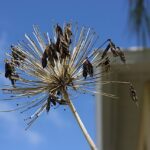 Can a Death Bloom Succulent Be Saved or is it Too Late?
Can a Death Bloom Succulent Be Saved or is it Too Late?Introduce natural predators, such as ladybugs or lacewings, to the garden
One effective solution for eliminating mealy bugs on succulent plants is to introduce natural predators into your garden. Ladybugs and lacewings are two beneficial insects that feed on mealy bugs, making them excellent allies in your battle against these pests.
Ladybugs, also known as ladybirds or lady beetles, are small, brightly colored beetles that are natural predators of mealy bugs. They are easily recognized by their red or orange bodies with black spots. Ladybugs feed on mealy bugs at all stages of their life cycle, including eggs, larvae, and adults. By introducing ladybugs into your garden, you can create a natural balance and reduce the population of mealy bugs.
Lacewings, on the other hand, are delicate insects with transparent wings and green or brown bodies. They are voracious predators that feed on various garden pests, including mealy bugs. Lacewing larvae, commonly known as "aphid lions," are particularly effective in controlling mealy bug populations. These larvae have powerful jaws that allow them to pierce and suck the fluids out of mealy bugs, ultimately killing them.
When introducing ladybugs or lacewings to your garden, it's important to provide an environment that supports their presence. Avoid using chemical pesticides, as they can harm these beneficial insects. Instead, create a habitat that attracts and sustains them. Planting flowering plants, such as daisies or yarrow, can attract ladybugs and provide them with a source of nectar. Lacewings are also attracted to the nectar of certain flowers, so consider planting marigolds or sunflowers in your garden.
It's important to note that introducing natural predators alone may not completely eradicate mealy bugs from your succulent plants. However, it can significantly reduce their population and help maintain a balanced ecosystem in your garden.
Prune and remove heavily infested areas of the succulent plants
Mealy bugs can be a common pest that affects succulent plants. One effective solution to eliminate mealy bugs is to prune and remove heavily infested areas of the plants. This helps prevent the pests from spreading to other parts of the plant and reduces their population.
 Understanding the Cause: Why is My Succulent's Base Turning White?
Understanding the Cause: Why is My Succulent's Base Turning White?To start, inspect your succulent plants closely and identify the areas that are heavily infested with mealy bugs. Look for clusters of white cotton-like substances or small insects crawling on the plant's leaves, stems, or roots. These are signs of a mealy bug infestation.
Once you have identified the infested areas, use a pair of sharp scissors or pruning shears to carefully cut off the affected parts of the plant. It is important to be thorough and remove all visible signs of mealy bugs, as even a few insects left behind can quickly reproduce and reinfest the plant.
After pruning, dispose of the infested plant material in a sealed plastic bag to prevent the bugs from spreading. Do not compost the affected parts, as the bugs can survive and continue to thrive in the compost pile.
Remember to clean your pruning tools with rubbing alcohol or soapy water after each use to prevent the spread of mealy bugs to other plants. This step is crucial in maintaining the health and well-being of your succulents.
Pruning and removing heavily infested areas of succulent plants is an effective solution for eliminating mealy bugs. However, it is important to combine this method with other strategies to ensure long-term success in controlling and preventing mealy bug infestations.
Keep the succulents well-watered to prevent stress and promote their natural defenses
One of the most effective ways to combat mealy bugs on succulent plants is to ensure they are well-hydrated. Proper watering not only prevents stress in the plants but also helps promote their natural defenses against pests like mealy bugs.
 Causes of Holes in Succulent Leaves: A Comprehensive Guide
Causes of Holes in Succulent Leaves: A Comprehensive GuideWhen succulents are well-watered, they are better equipped to fight off infestations and recover from any damage caused by these pesky bugs. Additionally, hydrated plants are less likely to attract mealy bugs in the first place.
To keep your succulents well-watered, it is essential to follow a few guidelines:
- Observe the signs of thirst: Succulents typically show signs of thirst through drooping or wrinkling leaves. This indicates that they need water and should be attended to promptly.
- Water deeply, but infrequently: When watering succulents, it is crucial to provide a thorough soak rather than frequent shallow watering. This encourages the growth of deep roots, making the plants more resilient to mealy bugs.
- Use well-draining soil: Succulents thrive in well-draining soil that prevents water from pooling around their roots. This helps prevent root rot, which can weaken the plants and make them more susceptible to mealy bugs.
- Avoid overwatering: While succulents require hydration, it is important not to overwater them. Overwatering can lead to root rot and create a damp environment that attracts mealy bugs. Allow the soil to dry out between watering sessions.
By implementing these watering practices, you can ensure your succulent plants remain healthy, resilient, and less prone to mealy bug infestations.
Use rubbing alcohol or cotton swabs to directly remove the mealy bugs from the plants
If you spot mealy bugs on your succulent plants, it is essential to take immediate action to prevent them from causing further damage. One effective solution is to manually remove these pests using rubbing alcohol or cotton swabs.
Step 1: Prepare a mixture of rubbing alcohol and water in a 1:1 ratio. This solution will help eliminate the mealy bugs effectively.
Step 2: Dip a cotton swab into the alcohol mixture and gently dab it onto the mealy bugs. Be sure to target each bug individually to ensure thorough removal.
Step 3: As you remove the bugs, periodically clean the cotton swab or use a new one to prevent spreading any potential infestation.
 Safe and Kid-Friendly: Non-Toxic Succulents for Pets and Children
Safe and Kid-Friendly: Non-Toxic Succulents for Pets and ChildrenStep 4: Continue this process until all visible mealy bugs have been eliminated. Pay special attention to the nooks and crannies of the plant as these pests often hide in hard-to-reach areas.
Note: It is crucial to exercise caution while using rubbing alcohol as it can be harmful to the succulent plants. Avoid applying excessive amounts or spraying alcohol directly on the plant's foliage to prevent any potential damage.
By directly removing the mealy bugs, you can effectively control their population and prevent further damage to your beloved succulent plants.
Place yellow sticky traps near the infested plants to catch the bugs
If you are dealing with a mealy bug infestation on your succulent plants, placing yellow sticky traps near the affected plants can be an effective solution. These traps are designed to attract and capture flying insects, including mealy bugs.
The bright yellow color of the sticky traps acts as a visual stimulus, attracting the mealy bugs towards it. Once the bugs come into contact with the sticky surface, they get stuck and are unable to escape.
When placing the sticky traps, make sure to position them near the infested plants or in areas where you have observed mealy bug activity. You can hang the traps on stakes or use adhesive hooks to attach them to nearby surfaces.
 Causes of Shriveled and Wrinkled Leaves in Succulents
Causes of Shriveled and Wrinkled Leaves in SucculentsIt's important to note that sticky traps alone may not completely eliminate a mealy bug infestation, especially if it is severe. However, they can significantly reduce the population of mealy bugs and help control their spread.
To maximize the effectiveness of the sticky traps, it's recommended to regularly monitor and replace them when they become filled with bugs or lose their stickiness. This will ensure that the traps continue to attract and capture mealy bugs over time.
Additionally, it's important to combine the use of sticky traps with other pest control methods, such as manual removal, natural predators, or insecticidal soap, for a more comprehensive approach to eliminating mealy bugs from your succulent plants.
Quarantine any new succulents before introducing them to the garden to prevent spreading the infestation
One of the most effective ways to prevent the spread of mealy bugs is by quarantining any new succulents before introducing them to your garden. Mealy bugs are notorious for hitchhiking on new plants and can quickly infest your entire collection if not caught early.
To quarantine a new succulent, keep it separate from your existing plants for a few weeks. This will give you ample time to closely monitor the plant for any signs of mealy bugs. During this period, it's essential to keep a close eye on the leaves, stems, and soil of the new succulent.
Tip: Place the quarantined succulent in a separate area away from your other plants to minimize the risk of spreading any potential infestation.
 Succulent Health: Healthy vs Unhealthy - Spot the Difference
Succulent Health: Healthy vs Unhealthy - Spot the DifferenceAdditionally, inspect the plant regularly for any visible signs of mealy bugs. These pests are tiny and appear as white cottony masses or small clusters on the leaves, stems, or roots of the plant. If you notice any suspicious signs, take immediate action to prevent the mealy bugs from spreading to your other succulents.
Tip: Use a magnifying glass or a smartphone camera with zoom capabilities to get a closer look at the plant and identify any hidden mealy bugs.
Remember to keep the quarantined succulent away from any windows or outdoor areas where other succulents might be present. This will help minimize the risk of cross-contamination.
By implementing a quarantine period for new succulents, you can effectively prevent the introduction and spread of mealy bugs in your garden, ensuring the health and vitality of your existing succulent collection.
Apply a systemic insecticide according to the manufacturer's instructions
If you notice a severe infestation of mealy bugs on your succulent plants, one effective solution is to apply a systemic insecticide. Systemic insecticides are designed to be absorbed by the plant and then transported throughout its tissues, making it an efficient method for eliminating pests.
Before applying any insecticide, it is crucial to carefully read and follow the manufacturer's instructions. Different insecticides may have varying application rates and recommended intervals between treatments, so it's essential to understand the specific guidelines for the product you choose.
When applying the systemic insecticide, make sure to wear protective gloves and clothing to avoid any direct contact with the chemical. Follow the suggested dilution ratio if necessary, and use a sprayer or a watering can to evenly distribute the insecticide solution onto the soil around the base of the succulent plant.
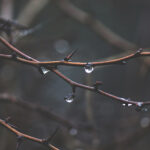 Understanding the Factors Behind Brown Stem in Succulents
Understanding the Factors Behind Brown Stem in SucculentsIt is important to note that systemic insecticides may take some time to take full effect. The product needs to be absorbed by the plant and then ingested by the mealy bugs as they feed on the sap. Therefore, be patient and allow the insecticide to work its way through the plant's system.
Additionally, it's crucial to monitor the plant closely after applying the insecticide. If you notice any adverse effects or signs of plant stress, such as wilting or yellowing leaves, discontinue the use of the insecticide immediately. Some succulent species may be more sensitive to certain systemic insecticides, so it's always wise to test a small area of the plant before treating the entire plant.
Remember, using a systemic insecticide should be considered a last resort when other pest control methods have failed. It's important to maintain a healthy growing environment for your succulent plants by practicing good cultural care, such as providing adequate sunlight, proper watering, and regular inspection for pests.
Maintain a clean and tidy garden to prevent mealy bugs from finding hiding spots
One of the most effective ways to prevent mealy bugs from infesting your succulent plants is by maintaining a clean and tidy garden. Mealy bugs are attracted to areas that provide them with hiding spots and areas where they can lay their eggs. By keeping your garden clean, you eliminate potential hiding spots for these pests.
Regularly inspect your plants for any signs of mealy bug infestation. Look for tiny white cotton-like clusters on the leaves, stems, and roots of your succulents. These clusters are a telltale sign of mealy bugs. If you spot any of these pests, it is important to take action immediately to prevent further damage to your plants.
Here are some effective solutions for eliminating mealy bugs on your succulent plants:
1. Manual Removal
One method of eliminating mealy bugs is by manually removing them from your plants. This can be done by using a cotton swab dipped in rubbing alcohol or a mixture of dish soap and water. Gently dab the affected areas with the cotton swab to remove the bugs.
 Troubleshooting: Is My Succulent Dying from the Bottom Up?
Troubleshooting: Is My Succulent Dying from the Bottom Up?2. Neem Oil
Neem oil is a natural insecticide that can help control mealy bugs. Dilute neem oil according to the instructions on the packaging and spray it directly on the affected plants. This will suffocate the mealy bugs and prevent them from spreading further.
3. Insecticidal Soap
Insecticidal soap is another effective solution for eliminating mealy bugs. It works by breaking down the protective coating of the pests, causing them to dehydrate and ultimately die. Dilute the insecticidal soap according to the instructions and spray it on the affected areas of your succulent plants.
4. Natural Predators
Introducing natural predators, such as ladybugs or lacewings, into your garden can help control mealy bug populations. These predators feed on mealy bugs and can provide a natural solution to your infestation problem.
Remember to repeat these treatments regularly to ensure the complete elimination of mealy bugs. By implementing these effective solutions and maintaining a clean garden, you can protect your succulent plants from mealy bug infestations.
Frequently Asked Questions
1. What are mealy bugs and why are they a problem for succulent plants?
Mealy bugs are small, soft-bodied insects that feed on the sap of succulent plants. They can cause damage by sucking out the plant's juices, leading to wilting, yellowing, and stunted growth.
2. How can I identify if my succulent plants have mealy bugs?
Look for white, cotton-like clusters or a powdery substance on your succulent's leaves, stems, or in the soil. You may also notice sticky residue or ants around the plant, as mealy bugs excrete honeydew.
3. What are some effective solutions for eliminating mealy bugs on succulent plants?
Some effective solutions include physically removing the bugs with a cotton swab dipped in alcohol, spraying the plants with insecticidal soap or neem oil, and introducing natural predators like ladybugs to control the infestation.
 The Common Reasons Succulents Die Easily: Understanding the Challenges
The Common Reasons Succulents Die Easily: Understanding the Challenges4. How can I prevent mealy bug infestations on my succulent plants?
To prevent mealy bug infestations, ensure proper plant hygiene by regularly inspecting your succulents, removing any affected parts, and keeping the area clean. Avoid overwatering and provide adequate ventilation to discourage mealy bugs from thriving.
If you want to read more articles similar to Effective Solutions for Eliminating Mealy Bugs on Succulent Plants, you can visit the Pests and Diseases category.

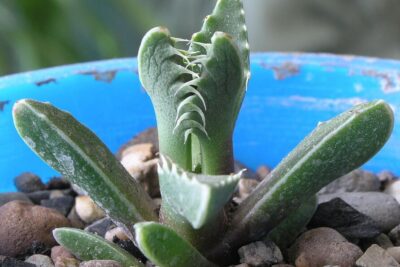

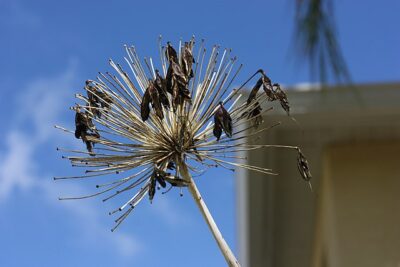
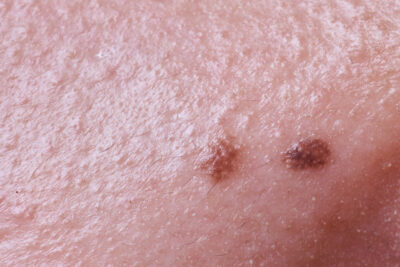
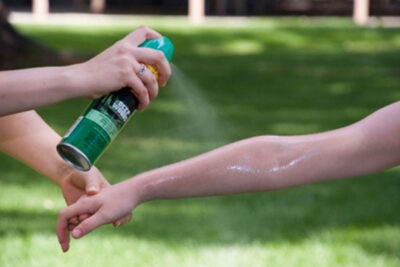
You Must Read